Yomikaki Hydroelectric Power Station
I visited Yomikaki Power Station located on the Kiso-gawa River.
The power station was built by Daido Electric Power Company in 1923.
The main building was designated as an important cultural property in 1994.
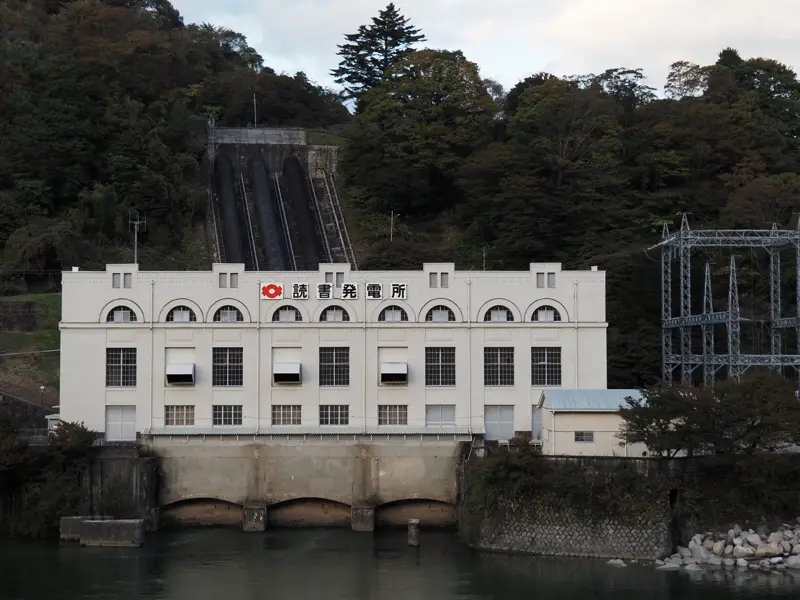
The photo was taken from National Route 19 on the opposite bank of the Kiso-gawa River.
There is a pedestrian bridge at the intersection of the national highway, and a full view of the power station can be easily seen by climbing up to it.
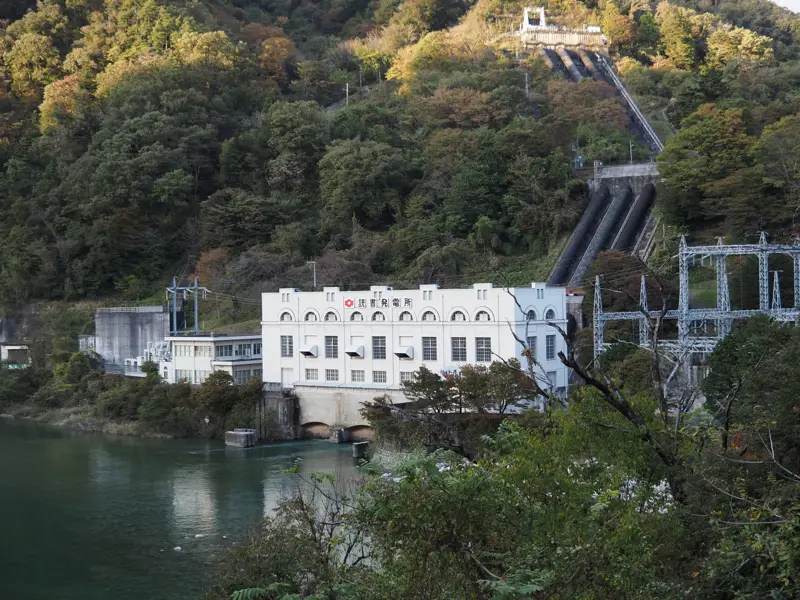
The Yomikaki Power Station project began in 1908 when Nagoya Dento Co., Ltd. received permission to use the river water of the Kiso-gawa, but construction could not begin for some time.
In 1918, Kiso Electric Steel Co., Ltd. was established by spinning off the steel and electricity business owned by Nagoya Dento. The president was Momosuke Fukuzawa, who had been the managing director of Nagoya Dento. The following year, the company name was changed to Kiso Denki Kogyo.
Kiso Denki Kogyo proceeded to build the Shizumo Power Station (completed in 1919) and the Okuwa Power Station (completed in 1921) on the Kiso-gawa River.
In 1921, Kiso Denki Kogyo, Osaka Hassoden (transmission & distribution), and Nippon Hydraulic Power merged to form Daido Electric Power. Momosuke Fukuzawa continued to serve as president.
Daido Denryoku simultaneously proceeded with the construction of Suhara Power Station (completed in 1922), Yomikaki Power Station (completed in 1923), Momoyama Power Station (completed in 1923), and Ohi Power Station (completed in 1924).
Yomikaki Power Station was a canal-type power station without a dam at the time of construction, with a maximum output of 40,700 kW. Water was taken from Kiso-gawa River and its tributaries, Atera-gawa River and Kakizore-gawa River. During redevelopment in the 1950s, the Yomikaki Dam was constructed (completed in 1960), and an underground power station was added, resulting in a current output of 119,000 kW.
Now let’s go near the power station.
I cross the Kiso-gawa River at Mine Bridge.
A plaque on the bridge reads “Built by Kansai Electric Power Co. in March 1959″.

Only the abutment remains right next to the Mine Bridge, which seems to indicate that a railroad bridge (on the Chuo West Line) used to be located here.

I walked on, expecting that the site would be off-limits somewhere, and was able to come very close to the building.
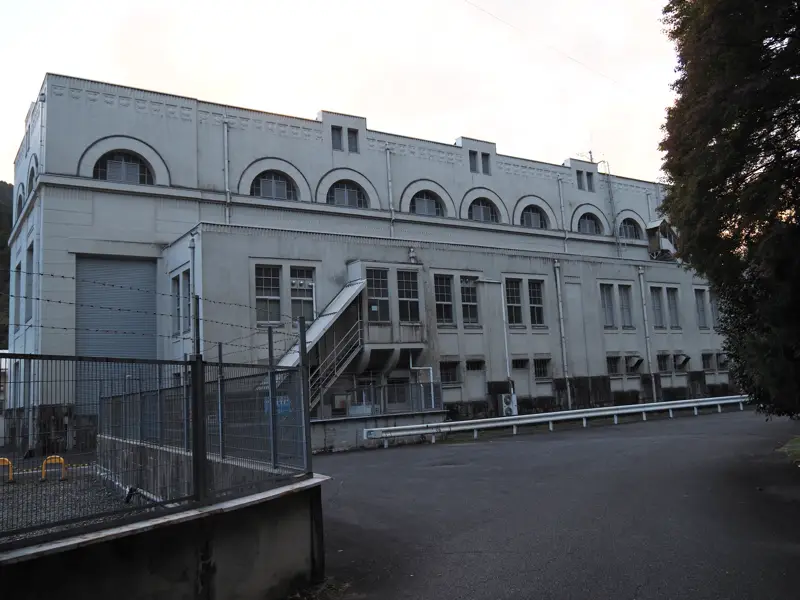
An explanatory board stands beside the passageway, which was designated as an important cultural property in 1994.

The following is a quote from the explanation.
“The Yomikaki Power Station facility was constructed by Daido Electric Power Company (now Kansai Electric Power Co., Inc.) between 1921 and 1923 as Japan’s largest power plant facility of its kind at that time. Momosuke Fukuzawa, the president of Daido Electric Power, was passionate about the development of hydroelectric power generation along the Kiso-gawa River, advocating the “one river, one company” principle, and built a series of power generation facilities during the Taisho era. Yomikaki Power Station facilities demonstrate the high technical standards of the time and are in harmony with the nature of the Kiso Valley. The following facilities were collectively designated as National Important Cultural Properties (Buildings) as a modern heritage representing the waterway-type power station facilities of the Taisho Period.
Yomikaki Power Station (main building, water tank, penstock, and monument) owned by Kansai Electric Power Co.
Kakizore Aqueduct Bridge (part of the water conduit, made of reinforced concrete, 142.4m) owned by Kansai Electric Power Co.
Momosuke-bashi Bridge (wooden suspension bridge for transporting construction materials for the power station, 247m, restored and repaired in 1992-1995, attached, a set of old timbers) owned by Nagiso Town”.
I could enter deeper into the property than expected.
The steel gate on the right is off-limits.

Powerful penstocks.

The monument near the penstocks.
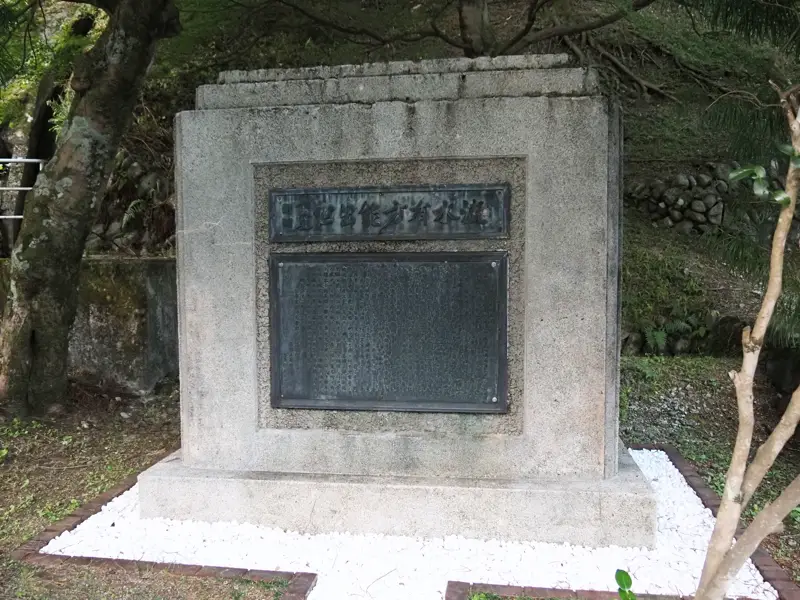
On the top of the monument is written, “Ryusui Hou Ari, Yokuyo ni izu". This title was written by Momosuke Fukuzawa. It is said to mean something like, “Flowing water can be turned into electricity by a method, and can open up civilization in the world".
The smaller text below was written by Seiryo Mine, then managing director of Daido Electric Power.
I will also write about what happened to Daido Electric Power.
In accordance with the government’s policy of state control of electric power, the Electricity Control Law was promulgated in 1938, and the following year, a national policy company, Nippon Hassoden (Japan Electric Generation and Transmission Company) was established. Daido Electric Power was ordered to invest in facilities and assets were transferred to Nippon Hassoden, and the company was dissolved in 1939.
(Daido Electric Power’s second president, Jiro Masuda, became the first president of Nippon Hassoden.)
After the World War II, Nippon Hassoden’s facilities were taken over by Kansai Electric Power Company, Chubu Electric Power Company, and Hokuriku Electric Power Company. All of the power plants in Kisogawa are now owned by Kansai Electric Power Co.
This time, I visited the main building of Yomikaki Power Station, though only from the outside.
I plan to write about the Kakizore Aqueduct Bridge and Momosuke Bridge, both of which have been designated as important cultural properties, in another article.
Lastly, I would like to post a photo of a pop-up card of the Yomikaki Power Station that I made.
It was made in 2004, so it was already 20 years ago.

[Reference]
“History of Daido Electric Power Company" (Daido Electric Power / 1941)
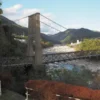



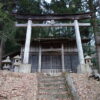


Discussion
New Comments
No comments yet. Be the first one!